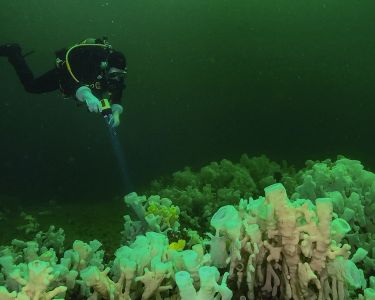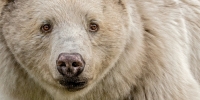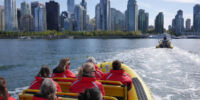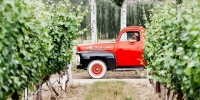
Photo credit: Adam Taylor
The Howe Sound Biosphere Region Initiative Society announces new Átl’ka7tsem/Howe Sound UNESCO Biosphere Region.
The community-managed Biosphere Region—home to ancient glass sponge reefs and two million-year-old volcanoes—champions local solutions to global environmental challenges.
Squamish, BC (Sḵwx̱wú7mesh Úxwumixw Territory) — Átl’ka7tsem/Howe Sound, an area renowned for its rich Indigenous culture, biodiversity and distinct geography, has become Canada’s 19th UNESCO Biosphere Region, the International Coordinating Council for the Man and Biosphere Programme (MAB-ICC) announced today. As jurisdictions around the globe face the profound impacts of habitat loss and climate change, the Átl’ka7tsem/Howe Sound Biosphere Region (AHSBR) is an international showcase for how regional coordination can create a place for humanity and nature to thrive.
“My hope is that it will effectively bring all communities in Átl’ka7tsem together for effective decision making but also to help people get out on the Land. Building that connection, to the territory and the Land, will help people better honour and to respect the environment but also the Life that lives in that environment,” says Joyce Williams, Sḵwx̱wú7mesh Úxwumixw Councillor and Co-Chair of Howe Sound Biosphere Region Initiative Society Board. “Átl’ka7tsem is really about beauty and hope, as much as it is about sustainable development.”
The Biosphere Region, located on the territories of the Coast Salish people, covers a 218,723-hectare swath of land and sea encompassing the entire Howe Sound watershed. Its zoning boundaries begin near Point Atkinson (Sḵ’íw̓itsut) in West Vancouver, running north to Black Tusk (T’eḵt’aḵmúy̓in tl’a In7iny̓áx̱a7en) near Whistler, and as far west as Gower Point on the Sunshine Coast. The core protected area traverses five BC Provincial Parks, one BC Provincial Conservancy, and several marine refuges. AHSBR is dotted by many iconic landmarks; such as Mt. Garibaldi (Nch’ḵay̓), a diamond-shaped peak towering over the Squamish landscape.
“This Biosphere Region exists to promote conservation and sustainable development in our area for generations to come,” says Ruth Simons, Lead, Howe Sound Biosphere Region Initiative Society. “This designation, five-years in the making, is really a testament to the hard work, collaboration, and consensus-building efforts of our community. We plan to carry this momentum forward as we reconvene all partners to develop the long-term vision for Átl’ka7tsem/Howe Sound, leveraging UNESCO’s powerful international network of regions.”
Given its proximity on the edge of Metro Vancouver (population 2.5 million), four major universities, and 13 youth camps, AHSBR is a model region for scientific research, place-based learning, and educational programs for youth and adults. With Indigenous cultural significance, an abundance of wildlife, wilderness, and nature-based recreational activities in its midst, it is difficult to imagine that Átl’ka7tsem/Howe Sound has not always been teeming with life and biodiversity. However, it is only within the last two decades that the area has seen a dramatic (yet fragile) recovery after more than a century of environmental degradation.
Citizen scientists recently discovered glass sponge reefs in the depths of Átl’ka7tsem/Howe Sound. Thought to be extinct, these fragile reefs provide refuge for many other animals and filter vast quantities of bacteria from seawater. On land, the craggy mountains formed by ancient glaciers and prehistoric volcanoes, are a focal point for scientific and archeological research, providing both a window into the last Ice Age and a pulse check on today’s climate change impacts.
As the urgency grows for communities to build a low-carbon future, the AHSBR Society will continue to play a role in consensus-building, education, and stewardship. The UNESCO Biosphere Region is the only existing framework for conservation and sustainable development encompassing the entire Átl’ka7tsem/Howe Sound watershed, finding local solutions to global environmental challenges. This “community of communities” includes First Nations, all levels of government, NGOs, various industry sectors, scientists, post-secondary institutions, and citizens.
“The designation of Átl’ka7tsem/Howe Sound fills me with optimism, providing new momentum to continue our work together to create a sustainable future for the Átl’ka7tsem/Howe Sound region. It also represents the collaborative and tireless efforts of individuals, organizations, governments and First Nations,” says Karen Elliott, District of Squamish Mayor. “The climate emergency is one of our greatest challenges and the Alt’ka7tsem/Howe Sound Biosphere Region designation will help us work with partners regionally to develop the solutions we need. The designation also amplifies the significance of our local environment and showcases to the world our region’s incredible beauty, biodiversity and cultural richness. Biosphere Regions have the unique ability to bring people together through common ground, based on a shared vision and goal. I look forward to Squamish playing an active role in the collaborative effort to create a sustainable future for the Átl’ka7tsem/Howe Sound region.”
*****
About UNESCO Biosphere Regions
UNESCO Biosphere Regions are areas of global ecological significance that make an ongoing commitment to strive for sustainability. They are not parks, and they have no legal authority. They are international designations that bring people together towards a common purpose, where people are inspired to find ways to live and work in harmony with nature. The prestigious UNESCO designation recognizes the best practices implemented in the region towards the conservation of biodiversity and sustainable development. The framework of the UNESCO Biosphere Regions program aligns with the overarching objectives of communities around the region that are striving for a low-carbon future, while balancing livability, resilience, and prosperity.





